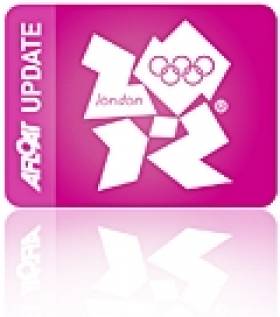Displaying items by tag: Paul McGrath
#OLYMPIC TORCH RELAY – President Michael D.Higgins welcomed the London 2012 Olympics Torch Relay for the first time to Ireland in Howth Harbour, where the first torch-bearer Cillian Kirwin from St Fintan's High School in Sutton had the honour of running with the flame, reports Jehan Ashmore.
Kirwin, a 15 year-old cross country champion was greeted by the President. Also attending where Lord Sebastian Coe of the London Olympics, Sir Craig Reedie of the International Olympic Committee (IOC) representing Jacques Rogge, Pat Hickey President Olympic Council of Ireland (OCI) and Mayor of Fingal Cllr Gerry McGuire, aswell as Carál Ní Chuilín, Sports Minister of Northern Ireland who accompanied the relay.
Hundreds of locals, excited schoolchildren and visitors alike enjoyed the festive atmosphere at the fishing harbour where the Olympic Council of Ireland headquarters are based. Their premises formerly Howth House, built around 1807 was where the supervisor of Howth Harbour resided.
Today's historic event with its detour to the republic is part of a 70-day London torch relay tour in the UK. Earlier this morning the torch had crossed the border where it was passed between two former Olympic boxers, Belfast's Wayne McCullough and Dubliner Michael Carruth.
The President told the large crowd that the flame's arrival in Ireland symbolised the growing closeness of the relationship between the UK and Ireland. The President spoke of the Olympics "where sport builds bridges" and of friendship and fairplay.
After a brief ceremony the Olympic hymn was sung by local children from Scoil Mhuire Primary School as the flame was whisked away under Garda escort to Dublin. The torch tour included Croke Park, the Garden of Remembrance, GPO and Trinity College.
When the torch reached the Liffey, it was carried across the Samuel Beckett Bridge by former international soccer player Paul McGrath to the Grand Canal Theatre. At the same time Dublin Port Company tug sisters Shackleton and Beaufort paid a tribute by firing powerful water jets high into the sky.
The sporting spectacle drew large crowds along the bridge and office workers looked down from their quayside offices to witness the torch head for its final destination in St. Stephens' Green.
Irish team's Chef de Mission Sonia O'Sullivan became the final torch-bearer. The celebrations culminated when she performed lighting an Olympic cauldron to commemorate the visit.























